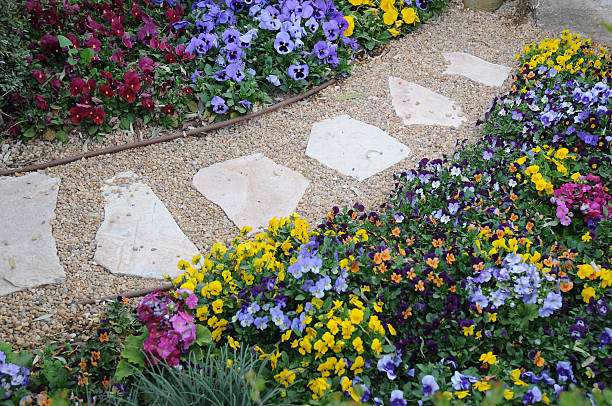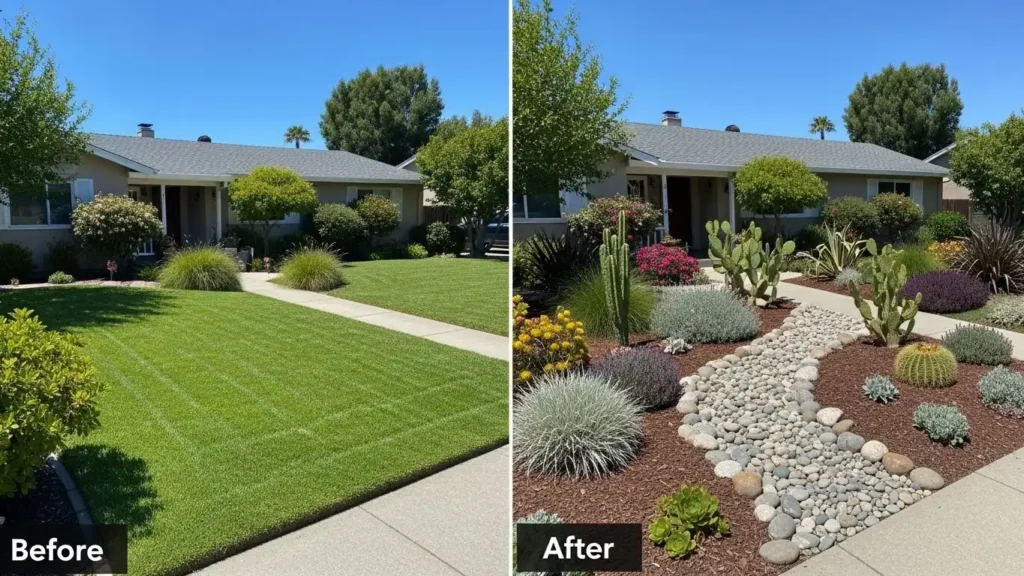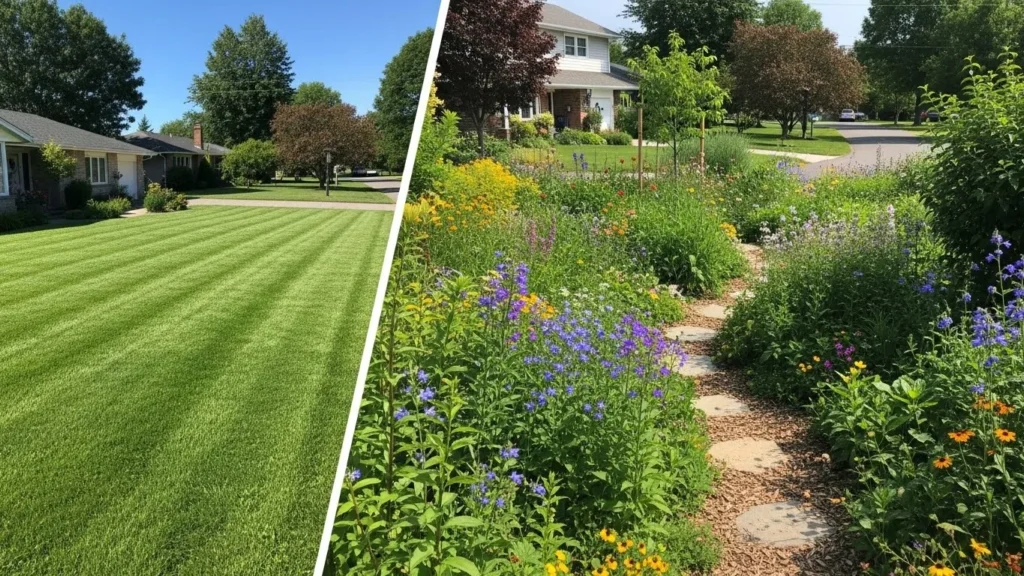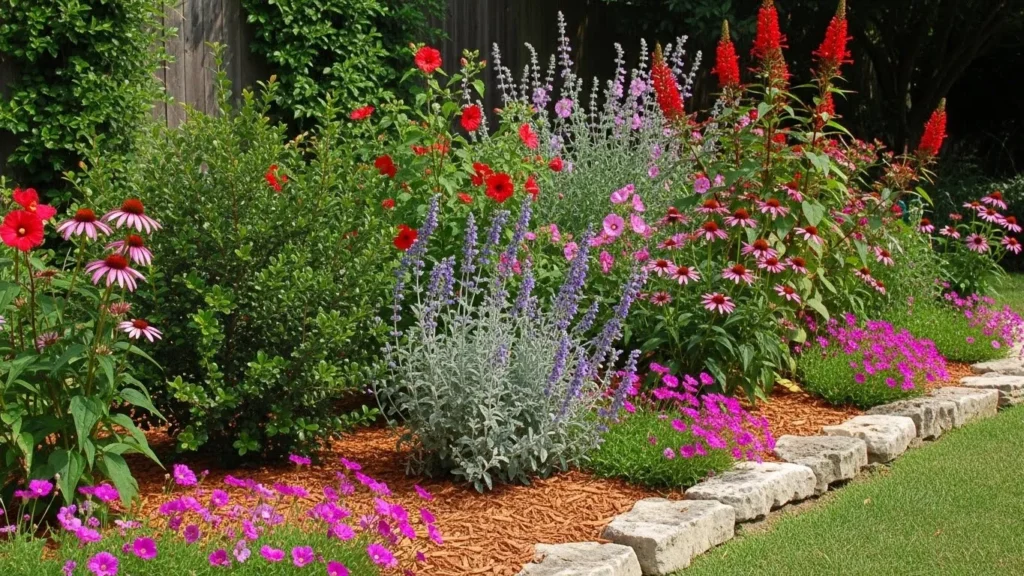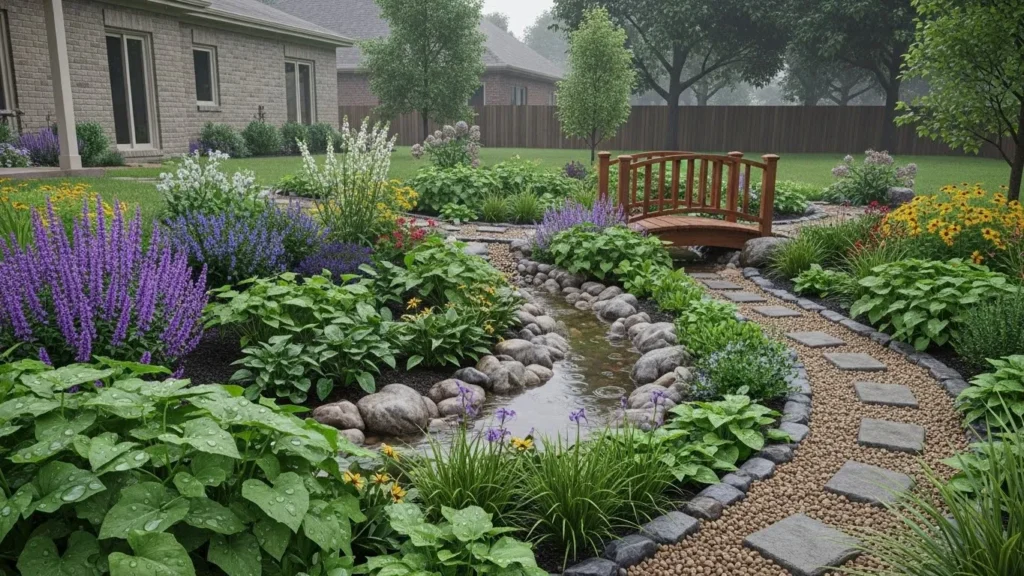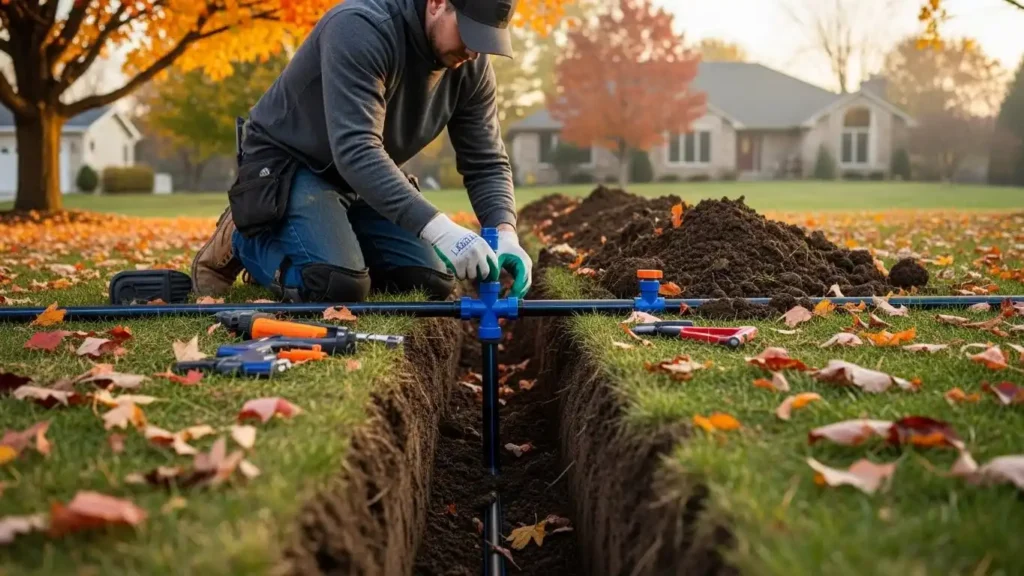Create a stunning focal point and define your outdoor space with a tailor-made stone pathway. See ideas perfect for Texas homes.
Creating a stone pathway is one of the most effective ways to enhance your yard’s aesthetic appeal while adding practical function. The stone pathway design not only improves your home’s hardscape curb appeal, but also helps guide foot traffic, protect lawns, and connect different areas of your landscape. This blog focuses on layout inspiration and practical advice for creating beautiful walkways using flagstone, gravel, and stepping stones that suit Texas yards perfectly.
Table of Contents
ToggleLayout Inspiration for Stone Pathways
Your pathway’s layout defines how visitors experience your yard and how you navigate your outdoor space. Good design balances aesthetic appeal with function, helping your yard flow naturally.
- Straight Paths for Formal Appeal
A straight pathway provides clean, defined lines, ideal for formal garden settings or homes with traditional architecture. Large flagstones laid closely create a strong visual guide, connecting driveways or street entrances directly to the front door or patio areas.
- Curved Paths for a Natural Feel
Curving walkways invite leisurely strolls and blend more seamlessly with organic landscape features. Winding paths soften sharp corners in rectangular yards and can help with managing drainage by directing water away from sensitive spots.
- Mixing Materials for Texture and Function
Mixing various natural stones and textured surfaces introduces unique character while ensuring your pathway stands up to regular use. Gravel aids drainage and offers a rustic look, while stepping stones provide stable footing. This blend is especially suited to the Texas climate, which alternates between heavy rains and dry spells.
Key Design Considerations
Before laying stone, consider your yard’s unique characteristics and how the pathway will be used.
- Traffic Flow and Purpose
Map out common routes to connect major points like patios, gardens, or driveways. Avoid overly narrow paths on busy routes to ensure comfort.
- Integration with Existing Landscape
Coordinate your pathway design with patios, retaining walls, or garden beds. Using edging materials such as natural stone or brick can keep your pathway neat and prevent material migration.
- Avoiding Drainage Issues
Proper slope and yard grading are essential to prevent pooling water. Incorporating drainage solutions ensures your pathway stays safe and intact over time.
- Blending with Landscape Styles
Choose a pathway layout and materials that match your overall landscape theme, whether rustic, formal, or modern, to enhance curb appeal cohesively.
Practical Advice for Installation and Maintenance
Careful installation is key to achieving a durable, attractive pathway that will stand up to Texas weather and daily use. Here’s a step-by-step guide to help you create a lasting stone walkway.
- Planning and Marking the Pathway
Start by mapping out the pathway with spray paint or string. Consider natural traffic patterns and ensure the path connects well with your home’s entry points and outdoor living spaces. Double-check for any obstacles like tree roots, utility lines, or uneven ground that may require adjustment.
- Excavation and Base Preparation
Excavate the area to a depth of about 4 to 6 inches to make room for the base and stones. Removing the topsoil helps prevent sinking and uneven settling later. After excavation, compact the soil with a tamper or plate compactor to create a firm foundation.
- Installing a Stable Base Layer
Apply a 3 to 4-inch layer of crushed gravel or decomposed granite as a stable foundation. This base promotes drainage and stabilizes your stones, reducing shifting caused by weather changes or foot traffic. Use a rake to level the gravel evenly, then compact it thoroughly.
- Laying the Stones
Place your stones thoughtfully, allowing 18 to 24 inches between stepping stones or tighter spacing for flagstones. Aim for a comfortable stride and a natural flow that suits your layout. For a tighter, formal look, position stones close together. Gaps can be filled with soil or sand. For a rustic, casual vibe, leave gaps and fill with ground cover plants or gravel.
- Filling the Joints
Fill the spaces between stones with polymeric sand, pea gravel, or soil mixed with moss or creeping thyme for a green touch. This prevents weed growth and locks the stones in place. Sweep the filler material into joints and lightly mist with water if using polymeric sand to activate binding.
- Adding Edging to Contain Materials
Install edging along both sides of the pathway using metal, plastic, brick, or natural stone. This step keeps gravel or smaller stones from spilling onto your lawn or garden beds, maintains clean lines, and prevents erosion along the path edges.
- Ensuring Proper Drainage and Slope
Check that your pathway has a slight slope of about 1/4 inch per foot to guide water away. Avoid flat or concave areas where water can pool and cause slippery surfaces or stone displacement. If needed, add small drainage trenches or French drains adjacent to the pathway to manage runoff effectively.
- Finishing Touches and Safety Checks
Once the stones are set and the filler is dry, walk the path to ensure stability and evenness. Adjust any stones that wobble or sit unevenly to prevent tripping hazards. Consider adding path lighting or reflective markers to improve nighttime visibility and curb appeal.
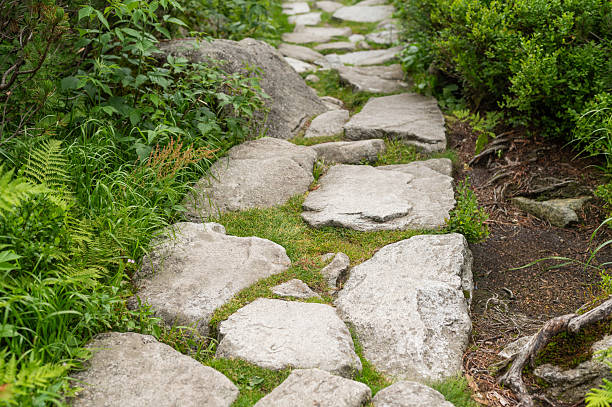
Maintenance Tips to Keep Your Pathway Beautiful
Proper care extends the life of your stone pathway design and preserves its appearance.
- Regular Cleaning – Sweep or hose off dirt, leaves, and debris regularly. Pressure wash flagstones annually to remove algae or moss buildup.
- Weed and Moss Control – Apply weed control fabric beneath gravel to reduce weed growth. Pull weeds from joints as they appear and consider natural moss removers for slippery stones.
- Replenishing Joint Materials – Periodically top off sand, gravel, or soil fillers between stones to maintain stability and prevent weed invasion.
- Inspecting for Damage – Check for cracked stones or erosion along edges, repairing or replacing damaged sections promptly to maintain safety and aesthetics.
Enhancing Your Pathway with Complementary Features
Stone pathways become even more inviting when paired with thoughtful landscaping and lighting.
- Path Lighting – Low-voltage or solar lights not only improve safety but add evening ambiance. Position lights to highlight stones and surrounding plants.
- Border Plantings – Use native Texas plants or drought-tolerant ground covers alongside your pathway. These soften hard edges and create a lush, inviting feel.
- Connecting Outdoor Spaces – Link your pathway to patios, decks, or garden features to create seamless transitions and extend your outdoor living area.
Incorporating these ideas helps you avoid common landscape design mistakes such as poor water flow or overcrowded planting beds, ensuring your pathway enhances both function and beauty.
Conclusion
Thoughtfully designed and properly installed stone pathways can significantly enhance your home’s hardscape curb appeal while providing practical routes through your yard. Focusing on layout, grading, and installation best practices ensures your pathway is durable and attractive for years to come. Regular maintenance keeps your investment looking fresh and inviting through all seasons.
For expert assistance designing and installing stone pathways that complement Texas landscapes perfectly, visit Let Us Do It Landscaping for professional services tailored to your needs. We guarantee beautiful, long-lasting walkways that add value and charm to your home.
